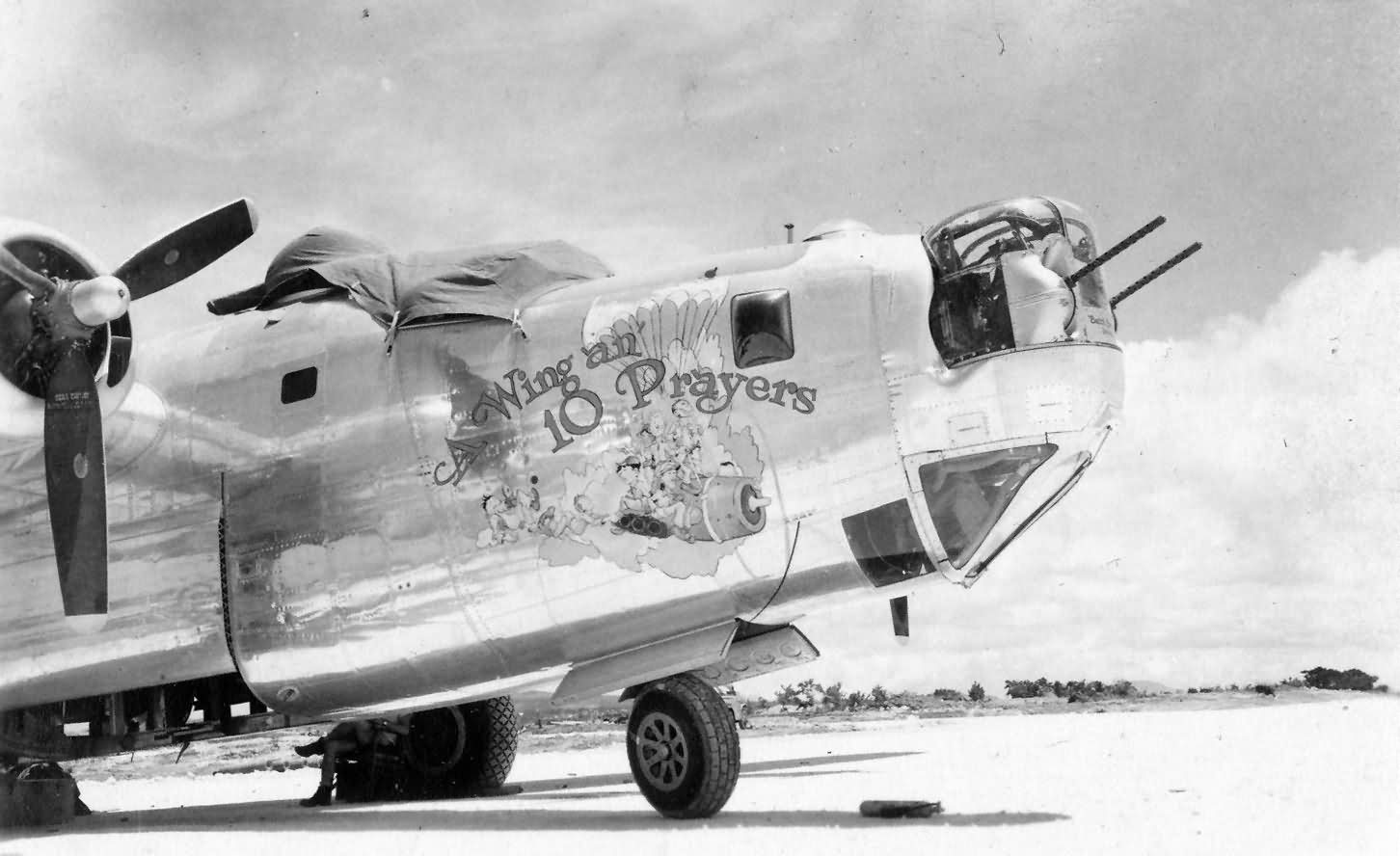Technical Specifications of the B-24M Liberator
The B-24M, the final production model of the Consolidated B-24 Liberator, incorporated several refinements based on wartime experience.
- Powerplant: The B-24M was powered by four Pratt & Whitney R-1830-65 Twin Wasp radial engines. Each engine was rated at 1,200 hp. These engines were also used in the B-24E, B-24F, and B-24J.
- Dimensions: The B-24M shared the same dimensions as the B-24J: a wingspan of 110 ft, length of 67ft 2in, and height of 18 ft. The wing area was 1,048 sq ft.
- Weights: The B-24M had an empty weight of 36,000 lbs and a gross weight of 64,500 lbs. This made it slightly lighter than the B-24J, which had an empty weight of 36,500 lbs and a gross weight of 65,000 lbs.
- Armament: The B-24M reverted back to the full armament of the B-24J, including a powered tail turret. This armament consisted of ten .50 caliber machine guns, along with a bomb load capacity of 8,800 lbs. The B-24H, a lightweight variant designed to save weight, had a single .50 caliber machine gun and a reduced bomb load.
- Crew: The B-24M had a crew of 10. This was typical for most B-24 variants.
- Lightweight Consolidated A-6B tail turret as standard: This differed from some earlier B-24Ls (serial numbers 42-50452 through 42-50508) that were fitted with Emerson A15 nose turrets. The shift to lightweight turrets was a common feature in later B-24 production, likely aimed at improving performance and handling.
- Redesigned canopy for improved visibility, starting with production block 20: This change reflected the ongoing efforts to enhance crew effectiveness and situational awareness.
- Smaller nose scanning windows used on the B-24L for most B-24M-COs
- Some B-24Ms fitted with manually-operated, lightweight, twin-gun turrets produced by Motor Products: This variation suggests that production of the B-24M involved a mix of standard and alternative components, possibly due to supply chain constraints or ongoing experimentation with different turret designs.
